
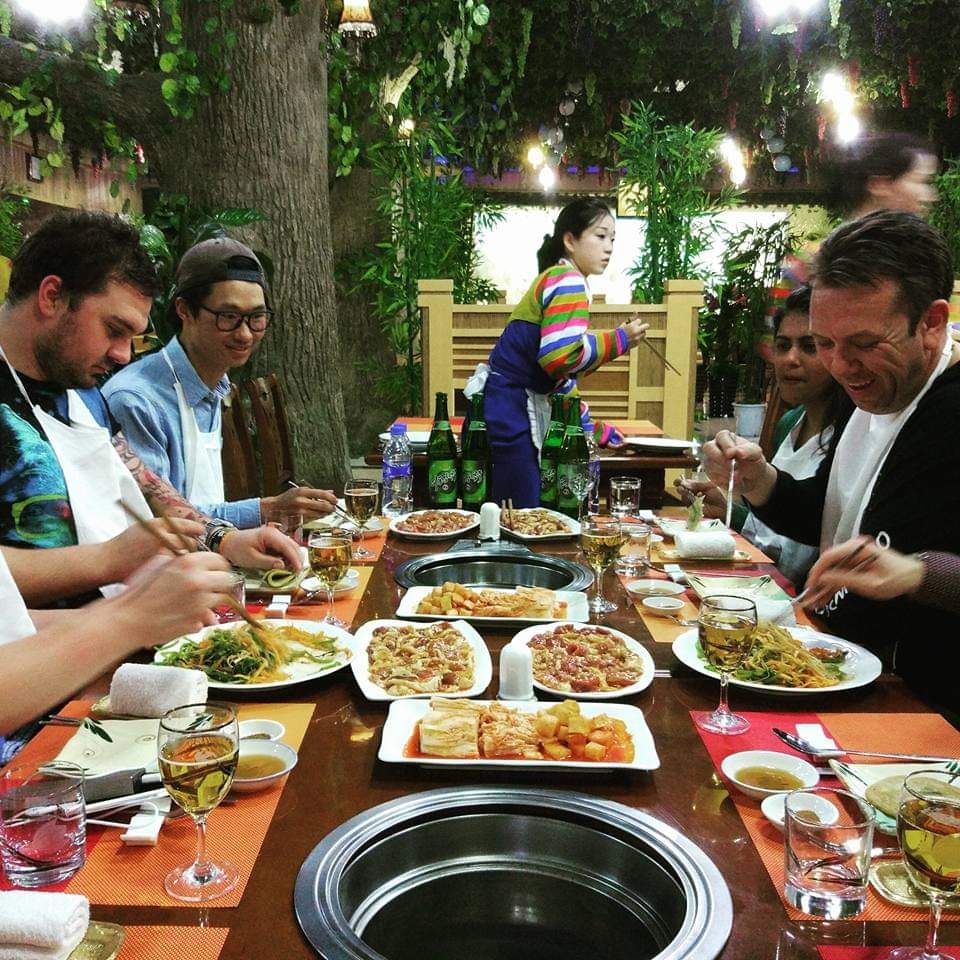
Korean cuisine or more specifically North Korean cuisine is the food made and enjoyed in the Democratic People’s Republic of Korea (North Korea).
At YPT we have more than a passing interest in the food of Korea, and have written extensively about it. On of our most popular articles was on the ten best North Korean foods you can try, as well as one on North Korean soju, and of course kimchi (and the differences between North and South kimchi), but we have been yet to address the cuisine of North Korea as whole, hence this article.
The origins of North Korean cuisine

North and south Korea are very much different places (duh), and this is not only related to the division at the 38th parallel. Even ignoring the elephant in the room that is the division of Korea, North Korea tends to be a lot more mountainous than the south and thus tends to grow different crops. Therefore, while there are apparent similarities between northern and southern Korean cuisines, there are various nuances and differences between the two.
North Korean cuisine can, therefore, be considered part of the wider Korean cuisine, but with influence from Manchurian/Chinese dishes, as well as a more contemporary take on western food, not associated with that of the Republic of Korea.
Traditional North Korean staples tend to be rice or noodle dishes accompanied by kimchi (on every meal), bulgogi (when meat is available), and of course, soju. North Korean beers are a more recent thing but have also become very much ingrained in North Korean culture. In North Korea, rice is traditionally served at the end of the meal, often with soup and is considered a “filler”, rather than something to be enjoyed.
What is the difference between North and South Korean food?
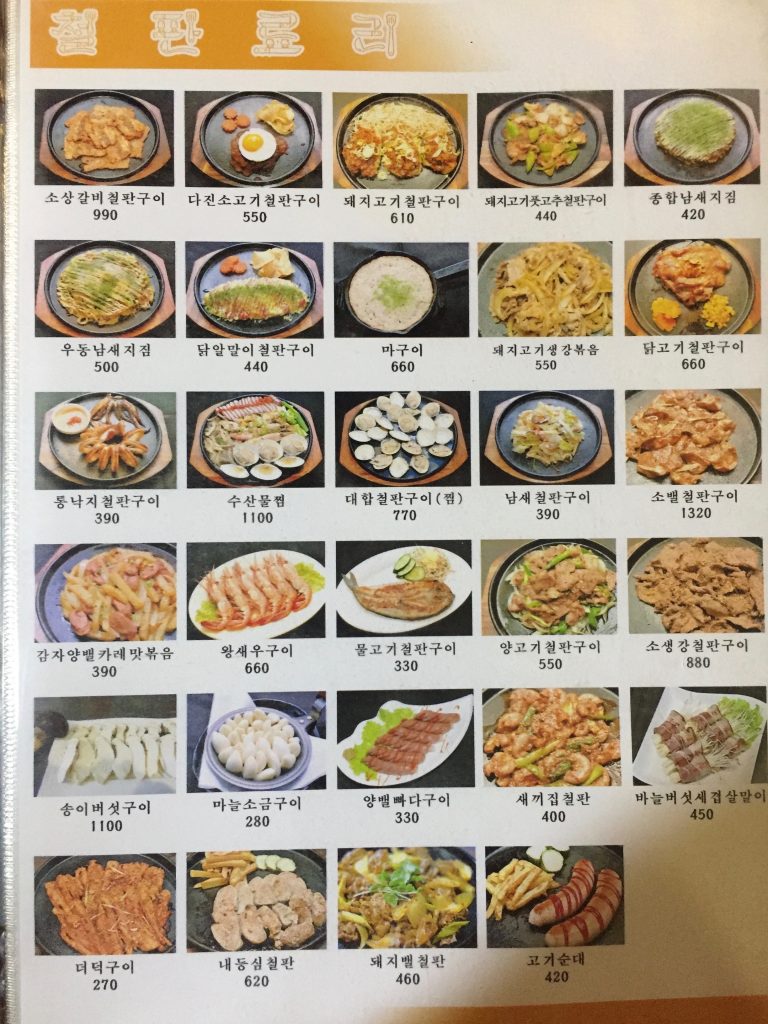
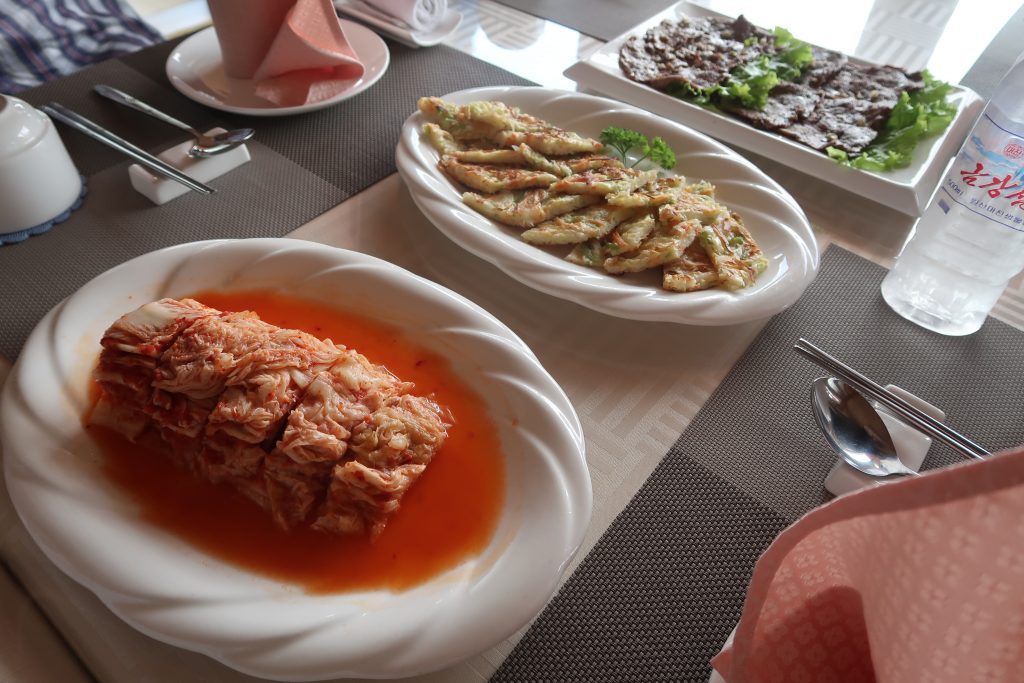
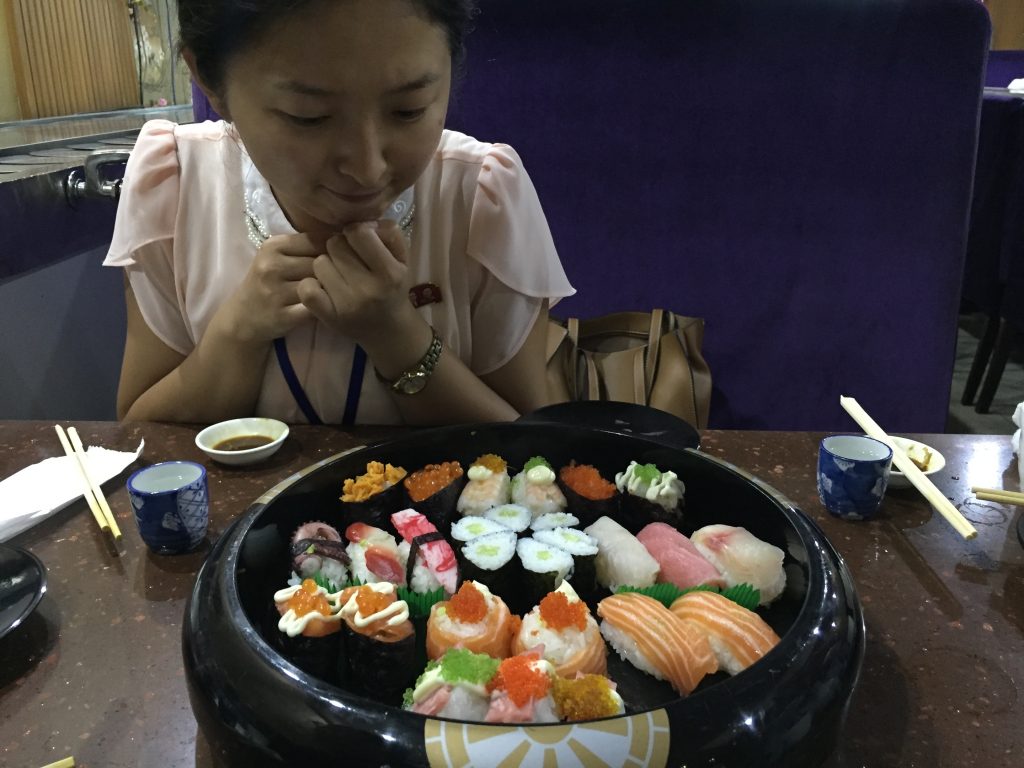
Pictured Above: A menu from a local restaurant in Pyongyang, Typical North Korean Dishes served at the Pyongyang hotel and one of our Korean colleagues enjoying Sushi in Pyongyang.
What is the difference between North Korean and South Korean food? Following the division of Korea and the Korean war, many families moved either from north to south or south to north, which ended up making both cuisines much more blended. Many formerly North Korean foods are now enjoyed as staples in the south, and visa-versa, you can even buy Pyongyang Cold Noodles in Seoul.
That being said both cuisines have had considerable influence from their colonial overlords, with sushi being a big deal in both north, and south, but other things like “Army soup” whereby hotdogs and cheese are thrown in with noodles are very much a southern thing.
To broadly generalize as well, North Korean food tends to be slightly less spicy than in the south, with some describing it as sourer and generally more flavoursome. There is also much less mass production in North Korea, giving everything from Soju to kimchi a much more fresh impression.
And those are the main differences between North Korean and South Korean food. Essentially very similar, but also two very unique cuisines.
North Korean Cusine
We have written about North Korean foods in great detail, so we will no rehash that, but will speak about North Korean dishes as a whole.
Meat in North Korea

North Korea much like China, and other developing Asian countries have traditionally seen meat as more of a luxury, although in modern times it has become much more readily available. Duck, and pork, both as easy to breed animals are mainstays of the cuisine of North Korea, with duck particularly being a North Korean delicacy. You will enjoy meat with most meals in North Korea when you visit as a tourist and the Duck BBQ Restaurant is one of our favourites in the country.
Rice in North Korea

Like in most Asian countries, rice is heavily farmed and is a staple for most North Korean citizens. As previously stated rice is seen as a filler dish and is often served at the end of the meal, sometimes with a broth, or soup that it can be mixed with. North Korea has its own vegetable heavy variation of fried rice, although it is far less common a dish than in China, or indeed southern Korea.
Noodles in North Korea
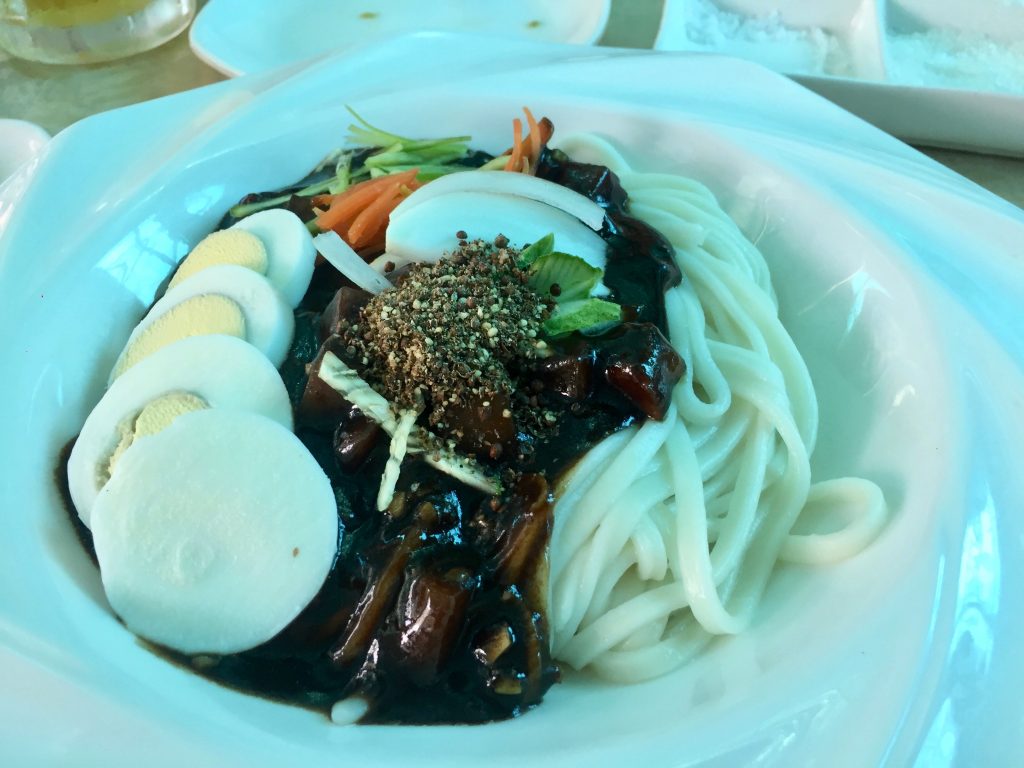
Noodles are a big deal in North Korea, and much like China and South Korea come in too many varietals to mention in the interests of this article. Ramen is made in North Korea, with Chinese and even South Korean imports even finding their way to North Korean shelves. And then, of course, there is Pyongyang Cold Noodles (a buckwheat noodle), of which we will delve more into later!
Seafood in North Korea


North Korea is surrounded by the ocean, so fishing and seafood are a big deal. One thing that truly sets North Korea cuisine apart from others is the abundance of seafood with almost every meal. I have honestly never had better, or cheaper seafood than that of Rason, which also has amazing street food.
Panch’an

Literally side dishes, and not dissimilar to southern-style side dishes. Traditionally spicy, salty, or tangy, and often times fermented in some way, such as the ever legendary kimchi.
Fruit in North Korea

Due to the landscape of North Korea fruits are hardly in abundance, although easy to grow products such as apples are harvested. One of the main fruits I personally associate with North Korea is kumquat. Kumquat is grown in one of the cooperative farms you can visit in North Korea. A citrus-based fruit in some ways similar to an orange, but also very much its own thing!
North Korean cuisine – famous dishes
As stated before we have a fabulous blog about the top ten foods to try in North Korea, so in the interests of this article we will briefly talk about 5 quintessential North Korean dishes.
North Korean Kimchi

Another one we have written about previously. Kimchi comes with every meal and is like a religion in North Korea. This fermented cabbage dish is similar to South Korean kimchi, but tends to be much fresher, and lacks that “processed” feeling that has become common at South Korean restaurants.
North Korean Dog Soup

Not commonly referred to as “Dog Meat” In North Korea, but instead Sweet Meat, dog meat is a delicacy that is often consumed 2 or three times a year and typically in summer on the hottest day of the year as the spiciness of soup is said to cool you down.
Talpi

There really is nothing more North Korean than beer fish! A dried pollack that you rip into shreds, dip it in soy with wasabi and eat, would you guess it? But with beer.
Pyongyang Cold Noodles
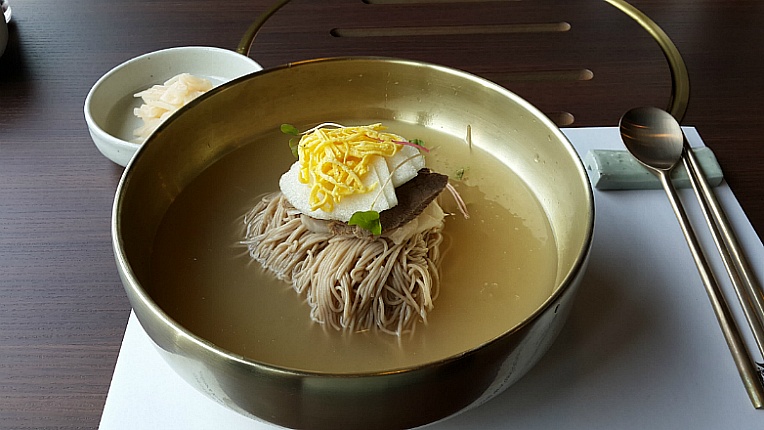
Another dish of such legendary status it has its own blog. Cold buckwheat noodles served with strong white vinegar, and North Korean mustard (more on that later). A true North Korean specialty that’s whilst sold elsewhere the only true Raengmyŏn, “naengmyeon” experience can be had in Pyongyang city.
Ginseng chicken
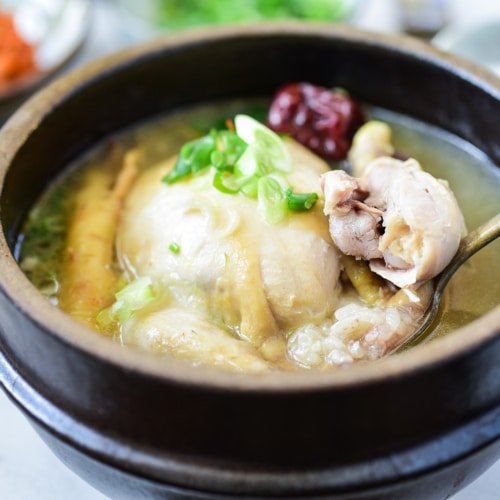
Ginseng we will talk much more about later, but North Korean ginseng is generally considered the best in the world. Ginseng chicken, or rather inseam-chicken can be had outside of North Korea but is most authentic when eaten in Kaesong, the South Korean city “won” during the Korean War.
Delicacies of North Korean cuisine
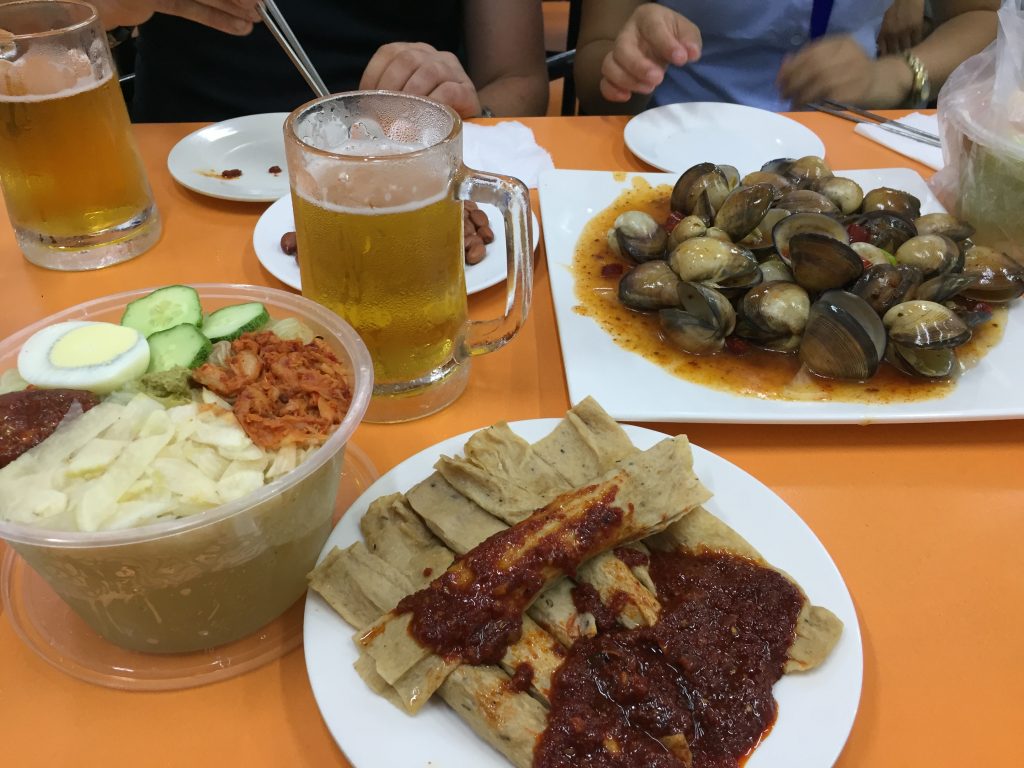
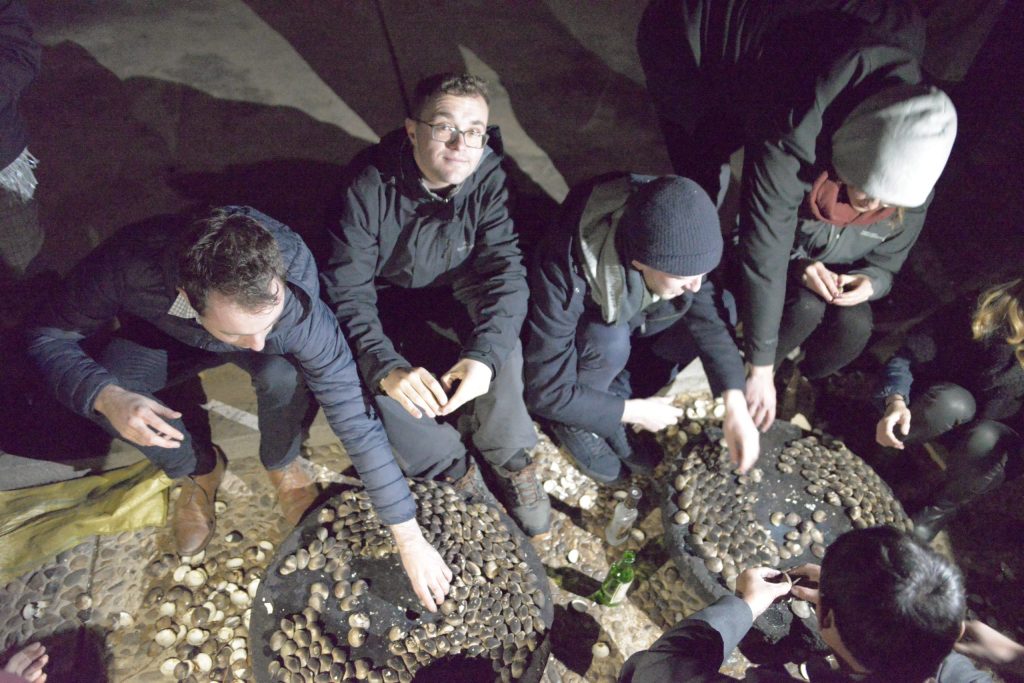
In many cultures delicacies is often used to denote weird. North Korea doesn’t have that much in the way of weird food (especially when compared to China), but it does have its fair share of delicacies! This is something we might explore further in another article, but for now we will just list our personal favorite top 5 North Korean delicacies. We will leave out beer fish and cold noodles, as they have already been mentioned!
Tiger Bone Whisky –Not that much like a whisky, and coming from an endangered species it is considered “good for the man”. You can buy this throughout Rason, and it is also available to a lesser extent in Pyongyang
Ginseng EVERYTHING – We have mentioned ginseng chicken, but they literally make everything from tea to candy out of the stuff. You can read about ginseng in more detail here.
Gasoline Clam BBQ – Another one that has its own blog. Literally clams cooked with petrol. I have not seen, or heard of this in any other country. The taste is unique to say the least. Who doesn’t like the smell of petrol with dinner?
Injogogibap – A famous North Korean dish made of rice, kimchi, soybean paste and oil. It has its origins during the Ardous March famine period and is like a North Korean fake meat dish.
North Korean drinks
Another subject very near to our hearts, and one we have written extensively about! Here’s a very brief guide to drinking in North Korea.
Above check out what a local bar in Pyongyang looks like on New Year’s Eve.
North Korean Craft Beers

Throughout North Korea, they brew their own beer, and it is very good. Taedonggang (the biggest brewery) even had their own beer festival a few years ago. My favourite North Korean craft beer is in the nearly inaccessible bar at Sinuiju station.
Beer in North Korea

The aforementioned Taedonggang is the most famous beer from North Korea, and is extremely good, not just by North Korean, but global standards. The beer is unpasteurized, so you do get the odd rotten egg! Read more about Taedonggang here.
North Korean Soju
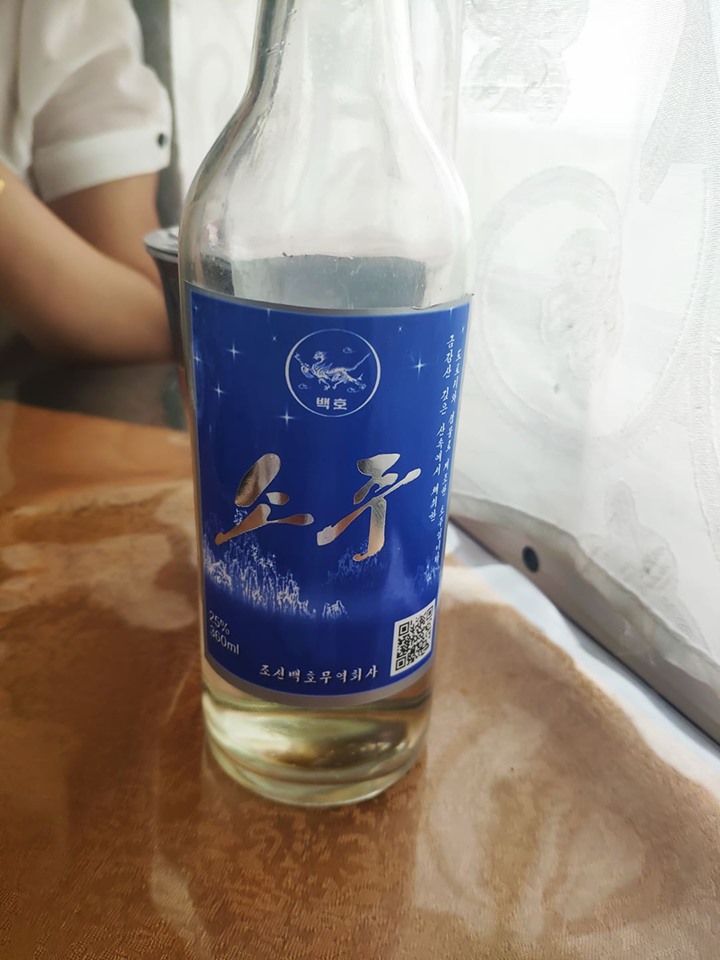
Going anywhere from 12-60% there is a huge curve when it comes to the soju of North Korea. Anything from mushrooms to ginseng can be used as a flavor for this drink. Great for making kimchi flowers! You can read a more in-depth take on North Korean soju here.
North Korean Whisky
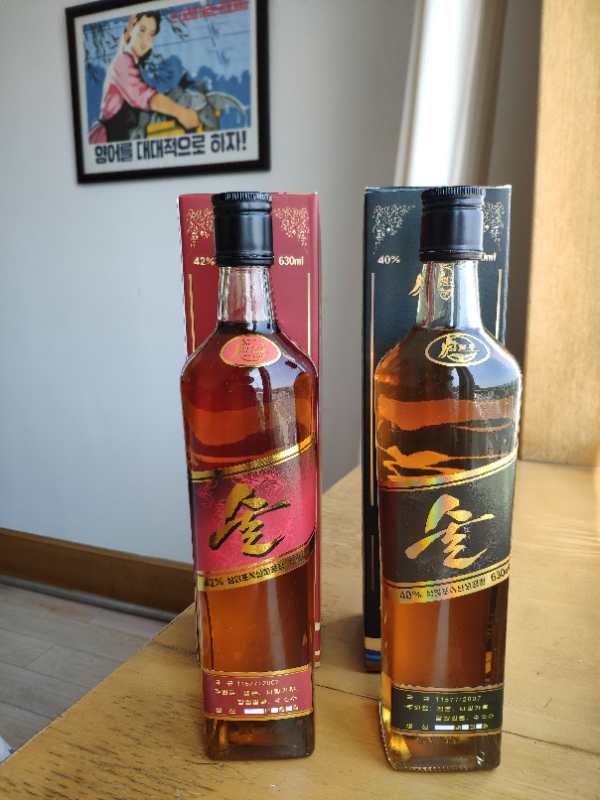
Last year seems so long ago, but it was last year we broke the story about North Korea creating its own whisky that looks a bit like Johnny Walker. Alas it did not taste that much like Johnny Walker! Read more about this “unique” drink here.
Makkoli

The original alcohol brewed on the Korean peninsula, of which you can learn more here, it has what can only be described as an acquired taste. Keep in mind it is a live drink and continues fermenting even in your stomach!
Non-alcoholic drinks in North Korea


North Korean tea – Tea is a big deal, and is served with most meals (not always hot). Green tea is generally very good, although slightly more upmarket would be ginseng tea, a form YPT favorite!
North Korean coke and sprite – A must if you like #ColaQuest as much as I do! Another one that has its own article. The big question of course is can you mix it with North Korean whisky. You can, kinda….
North Korean cream soda – My favorite drink by far (well, second to soju). Often served when you fly into North Korea with Air Koryo, if I could export this, I would.
North Korean sparkling water/Kangso Yaksu – Made famous by it being an attraction you can visit on the way to Nampho/Nampo. North Korean sparkling water is of a very high standard.
Soy milk – North Korea makes its own soy milk, and indeed provides it for free to its children. Soy milk is a funny thing, you either like it, or you don’t. I’ve spent long enough in China that it has grown on me!
Best restaurants in North Korea

Another subject that has been covered in other blogs, so in the interests of this article we will concentrate on some slightly more quirky ones!
Kwangbok Department Store – OK, so we get that it is a department store, but the array of North Korean Street Food makes it a firm YPT favourite. The 40 cent draft beers outside certainly don’t do it any harm.
Takahashi Restaurant – Not Korean food, but Japanese. Run by the former chef to General Kim Jong Il. We feel it warrants a special mention!
Pyongyang Duck BBQ Restaurant – Formerly a favorite for tour groups, but now much less visited. Like a fusion between Beijing duck, and Korean BBQ. What these guys can’t do with a duck….
Dongrim Hotel – The food here is far from earth-shattering in the hotel itself, but outside in the summer they do phenomenal lamb BBQ. This is North Korean street food at its very finest.
Yanji dog BBQ – Another contentious one, and indeed not even in North Korea, but the proximity of Yanji to the DPRK, and the ethnicity of its residents gain it an honorable mention. You name a part of the dog you can eat, and they cook it. Ethics aside, dog tastes alarmingly good.
And last but not least the Pyongyang Restaurant Franchise – The Pyongyang restaurant franchise was formerly a huge money source for North Korea, with all waitresses and chefs being from North Korea. Restaurants could be found throughout Asia, and even in Holland. Sadly sanctions have meant most of them closing, although you can still visit them in China, such as the ones in Shanghai. This is one thing we would love to see coming back to the North Korean culinary scene one day, should there be any form of detente…
And that is our comprehensive guide to the North Korean culinary scene! Did we miss anything?





